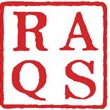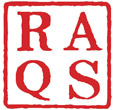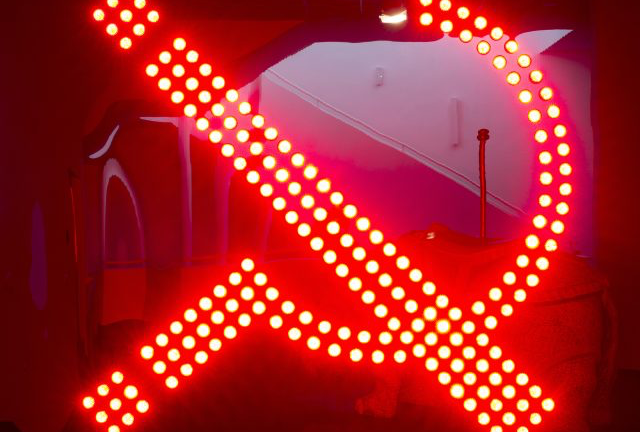Reading Light
Siege du Parti Communiste Francaise, Festival d’Automne, Paris (2011)
Reading Light – the work presented by Raqs in Oscar Niemeyer’s iconic building for the French Communist Party at the Place Colonel Fabien – was a set of illuminated signs that use text, typography, light sources and electricity to conjure a renewal of human aspirations. The ‘Reading Light’ sculptures use an array of lightbulbs of different sizes, shapes and specifications to spell out words, phrases and shapes. The work ‘lights up’ sometimes by creating a series of retinal afterimages in the viewer’s field of perception, and at other times through the interplay of surface, shape, darkness and luminosity. This physical process corresponds to the triggering of responsive elements in the consciousness of an engaged observer. Reading Light works with the curves and the shadows produced by the curvature of concrete to offer a luminous calligraphic annotation to Niemeyer’s intensely humanist geometry of space. The illuminated shapes produced by the array of light bulbs suggest an arresting configuration of orthographic signs – question marks and exclamation signs – pointing to the continuing need for the electrification of frozen attitudes by intermittent surges of liberating doubt.
Acrylic, MDF, red LEDs, electrical wires, gold mylar sheet
Marks offer a luminous typographic annotation to the political imagination. The illuminated shapes produced by the array of red light bulbs suggest an arresting configuration of orthographic devices – a question mark and an exclamation sign – that couple to form an echo of the hammer & sickle sign. The work bathes the entrance to the foyer in red light, and finds itself reflected on many of the surfaces that surround it. By having questions marks and exclaimation marks perform the hammer & sickle sign, ‘Marks’ (a play on the name ‘Marx’) reiterates and celebrates the legacy of asking questions and articulating deeply felt human desires.



Text, lightbulbs, fixtures, acrylic, wire, synchroniser
Revoltage fills the space it occupies with warmth, light, and the charge of an idea that embraces both celebration and rage. It suggests the energy, or “voltage,” of what it means to revolt, to commit oneself to humanity. The letters join to suggest an incandescent hybrid between electricity and uprising – alternately illuminating the words “Revolt” and “Voltage” through a fluctuating electrical current in order to coin a new thought, “Revoltage”. Revoltage registers first as an after-image (the kind we see when we shut our eyes after looking at a strong source of light), and then as a subliminal suggestion within our consciousness to brighten our days with the brilliance of a form of truant, rebel power that refuses to either name itself or be named into domesticity.
A cascade of black and red wiring (anarchy’s traditional colours) makes its way down from the multitude of light bulbs that make up the word, and flows along its length on the ground. The bunched wires merge and divide like a map of the tributaries of a mighty, turbulent river before disappearing into the shadowy darkness behind the work. By representing the transport of the electrical energy that fuels the work, the wires evoke the way in which ordinary people all over the world have flooded their cities in recent times (in Cairo, New York, Athens, Madrid, Moscow, Tel Aviv, and elsewhere), like rivers in spate, electrifying global consciousness with the actualisation of a new politics, carrying with them the charge of a new mode of being human.
With Revoltage, Raqs have begun writing a new glossary for these times.




2 synchronized video projections with sound, 18’ 32”
“Strikes at Time” is a lucid dream, readings from an occasional anonymous journal, and a long walk at the edge of the city of the night. In that no man’s land annexed by the awakening mind from the fatigue of the labouring day, the work weaves together a disquisition on time in the form of a discreet annotation on the philosopher Jacques Rancière’s ‘The Nights of Labour’, together with renditions of the found text of a worker’s diary by the CyberMohalla Ensemble, a group of unorthodox proletarian urbanists that Raqs has been in dialogue with over a decade. The shadowy presence of a Yaksha and Yakshi – guardians of wealth in Indic mythologies – stands watching over the work, marking time with questions.














